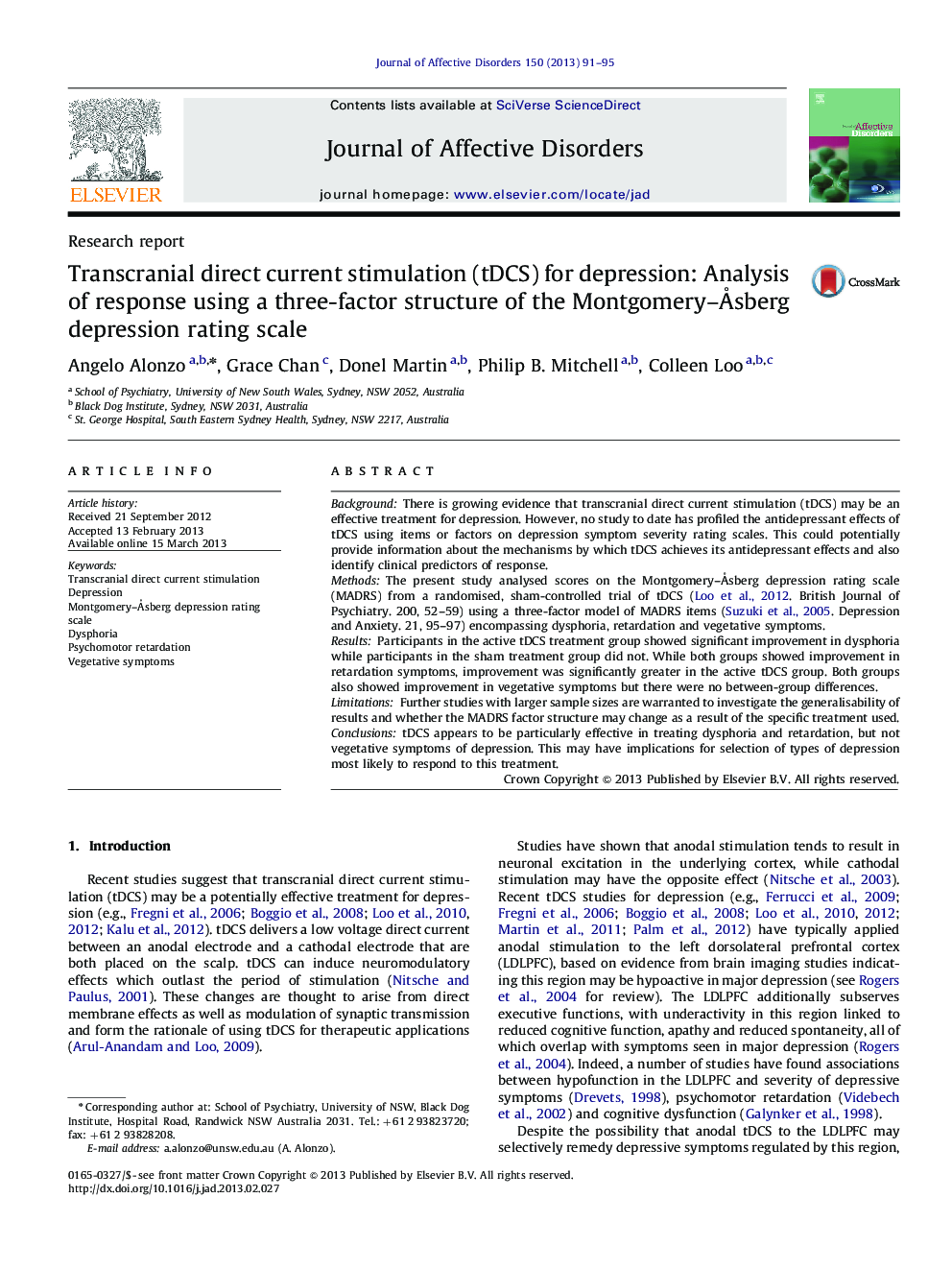| Article ID | Journal | Published Year | Pages | File Type |
|---|---|---|---|---|
| 6234151 | Journal of Affective Disorders | 2013 | 5 Pages |
BackgroundThere is growing evidence that transcranial direct current stimulation (tDCS) may be an effective treatment for depression. However, no study to date has profiled the antidepressant effects of tDCS using items or factors on depression symptom severity rating scales. This could potentially provide information about the mechanisms by which tDCS achieves its antidepressant effects and also identify clinical predictors of response.MethodsThe present study analysed scores on the Montgomery-Ã sberg depression rating scale (MADRS) from a randomised, sham-controlled trial of tDCS (Loo et al., 2012. British Journal of Psychiatry. 200, 52-59) using a three-factor model of MADRS items (Suzuki et al., 2005. Depression and Anxiety. 21, 95-97) encompassing dysphoria, retardation and vegetative symptoms.ResultsParticipants in the active tDCS treatment group showed significant improvement in dysphoria while participants in the sham treatment group did not. While both groups showed improvement in retardation symptoms, improvement was significantly greater in the active tDCS group. Both groups also showed improvement in vegetative symptoms but there were no between-group differences.LimitationsFurther studies with larger sample sizes are warranted to investigate the generalisability of results and whether the MADRS factor structure may change as a result of the specific treatment used.ConclusionstDCS appears to be particularly effective in treating dysphoria and retardation, but not vegetative symptoms of depression. This may have implications for selection of types of depression most likely to respond to this treatment.
